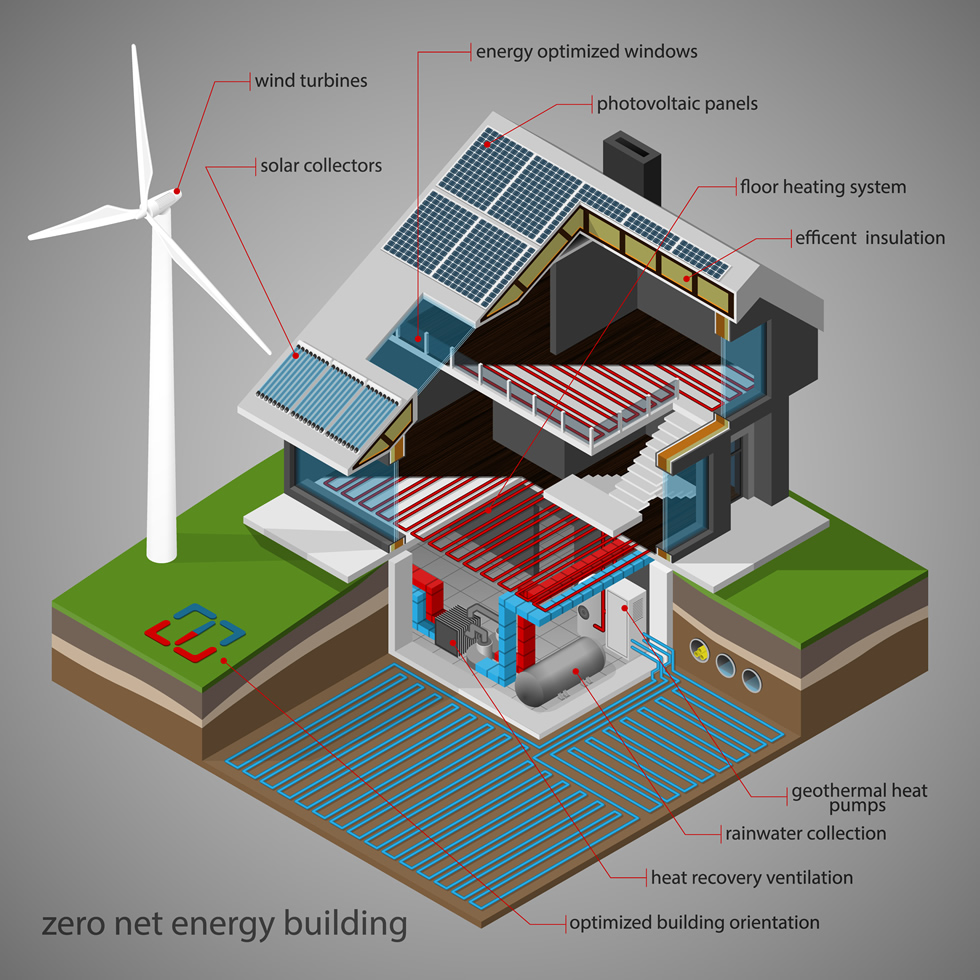Energy efficiency building, both for commercial and residential purposes, is not a new thing nor a passing trend but a strong commitment for improvement of energy efficiency in buildings and gas emissions produced by them. Governments of many countries worldwide already identified cost-effective potential for implementing energy saving measures.
Following this line, a new request to the European Commission comes from the building industry claiming that not only the new constructions must fit the energy efficiency standards, but also the existing ones, three-quarters of which are totally inefficient. The deadline suggested by them is 2050 when all existing buildings should retrofit to a “nearly zero energy” standard by their transformation into sustainable elements of the energy system of this century. The goal is to provide a clear vision of this important question and involve all the citizens and institutions regardless their social role into complying with the Paris Agreement.
This initiative will be possible with the explicit support from the EU unlocking investment in the building and construction sector and ensuring higher growth for the companies. The outcomes will be visible and attractive, according to the representatives of the sector – much more comfortable, safe, affordable and also sustainable homes for European citizens.
‘Nearly zero’ standards are similar to those outlined by the World Green Building Council’s project – Advancing Net Zero – with the target to make all the world’s buildings ‘net zero’ of emissions by 2050. This project is supported by many different countries, such as Australia, Brazil, Canada, Germany, India, Netherlands, South Africa and Sweden.
The European Commission must define buildings’ energy performance and financing together with targets, which might be even more ambitious than the current ones (achieve a reduction of 20% in energy use by 2020), for energy efficiency for 2030 as the first milestone. Another important element in this scheme is financing that can be run through ‘energy efficiency’ mortgages for homebuyers or tenants when carrying out eventual transformation within their properties. This a so-called “pan-European mortgage financing system” to ensure affordability of sustainable homes for the European citizens.
Let’s remind that we can produce our own renewable electricity (according to the recent Dutch study, there are 264 million people in Europe who can do it), and this is what is highly encouraged to comply with energy efficiency standards by 2050. The countries like Sweden, Germany and Netherlands are already leading this initiative, but it must be extended to other countries that will need to readjust their tax policy and guarantee prices on the energy market for electricity surplus sale by households.
Sources:
European Commission Must Be More Ambitious in its Energy Efficiency Targets Says Building Sector
Call for Nearly Zero Energy standard for retrofitting European buildings by 2050











